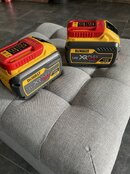Well you worded it rather flippantly, but yeah, pretty much. Some of the parts are likely milled/lathed in-house but most part wont. Even the car industry - that is actual mass production - gets most of their components from suppiers these days.So, let's assume that every part of the Go is outsourced and all Seacraft does is receive crates of parts and assemble them somewhere. I guess that is what you are saying?
Will you also assert that there is no difference in the way the original demo units were built than the way the production units are built? Same people building them? Using the same tools? Using the same process (e.g. build one complete unit at a time versus building a bunch of sub-assemblies at once, then building other sub-assemblies, then eventually doing a final assembly)?
How did you imagine this looks like? Did you think they have specially for seacraft or suex designed and build robotic assembly line that build the motor from scatch, does the wireing and put in O-Rings?
DPV and rebreather companies are tiny little companies. Doing sub assemblies or not and and hiring some extra people doesn't make something 'mass production' or automation... that more of a work flow thing.
In the picture it looks like you have a revo. You think those are build by a machine on an automated assembly line that cranks out 500 ccr per day? DPVs, like ccrs are a tiny, tiny part of an already tiny scuba instustry. If they were mass produced products, they'd be WAY, WAY cheaper. Consider this, you can get a brand new car from a company like Dacia for just over ten grand. That's hardly more than a new revo or 1.5 times the price of a DPV like the XK or larger seacraft models. Now look at how many parts are on a ccr or a DPV and how many parts are in an internal combustion engine... nevermind the rest of the car.
The stuff is so expensive because it's super low volume and not mass produced.




